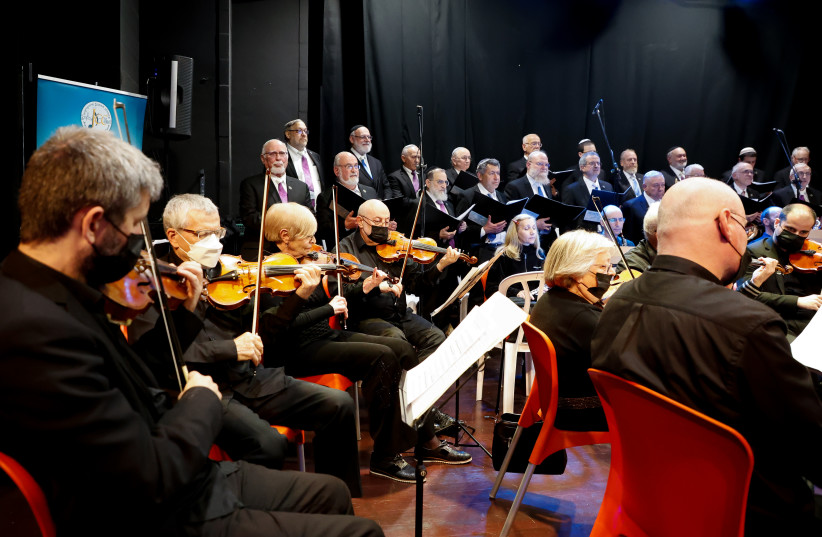Every year, the Ra’anana Symphonette devotes a concert to new talent. This year, conductor Maayan Franco and pianist Nadav Ein-Gal shared stunning performances clearly marking them as “stars of the future.”
Franco was born and educated in Israel, began his music studies at the Givatayim Conservatory and Thelma Yellin School of Arts in Tel Aviv, and is the winner of international prizes and awards. Currently, he resides in Berlin and has convenient access to Europe’s finest orchestras where he is a frequent guest. He divides his time between conducting operas, championing new music, and performing symphonic concerts.
The RSO program opened with the Overture to Hamlet, a symphonic poem by composer and famed pianist Franz Liszt whose aim was to convey the overall mood of Hamlet’s story. He offers the listener a score of tonal colors, which conjure up sound images of Hamlet’s life of many trials and unrequited love for Ophelia. The music’s pallet, the reoccurring, limping leitmotiv and its overall demand for rhythmic precision and emotive expression were clearly displayed by the orchestra.
Liszt's skills exhibited through piano solos
The technically brilliant and emotionally evocative side of Liszt’s skills was exhibited by piano soloist Ein-Gal. From the moment the young pianist lifted his arms, one sensed his strength, musicianship, and concentration. As he continued through the intricacies and beauties of Liszt’s Concerto No. 2 in A major, he paid close attention to being part of the orchestra in the overall music-making. At the same time, he showed enjoyment in his mastery of the moments of sheer beauty.
Liszt’s “fireworks” were followed by the orchestral suite Pelleas and Melisande by Jean Sibelius. The Finnish composer scored this piece in several short movements for chamber orchestra, each evoking a different mood associated with the story.

It opens with the composer’s signature sounds, the dense sonorities of the strings, and continues highlighting the virtuosity of the concertmaster, the first cellist, the woodwinds, and the addition of the sonorous English horn.
Maestro Franco handled the dramatic changes of each movement with skill and clarity. In the final movement, which portrays Melisande’s death, he brought the music to a closure that was a dream. Franco is a conductor who does not get in the way of the music. His gestures are decisive and precise and at the same time fluid and emotive. Of utmost importance, he enables the music to tell its own story.
